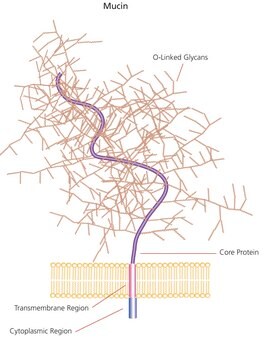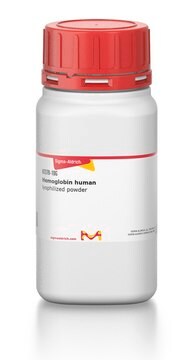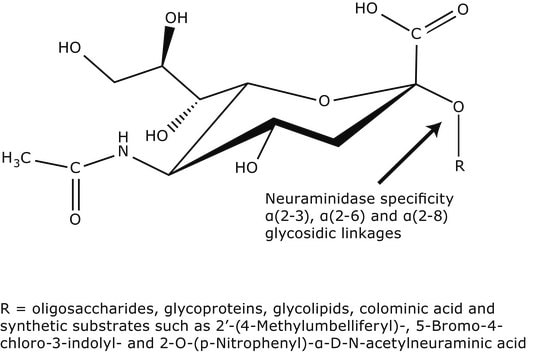499643
Mucin, Bovine Submaxillary Gland
Native mucin from bovine submaxillary gland. It is a rich source of O-linked oligosaccharide chains and it is suitable as a substrate for neuraminidase.
Synonim(y):
Mucin, Bovine Submaxillary Gland
Zaloguj sięWyświetlanie cen organizacyjnych i kontraktowych
About This Item
Polecane produkty
opis
Merck USA index - 14, 6296
Poziom jakości
Formularz
lyophilized
producent / nazwa handlowa
Calbiochem®
warunki przechowywania
OK to freeze
desiccated
rozpuszczalność
dilute aqueous base buffer: soluble
water: soluble
Warunki transportu
ambient
temp. przechowywania
2-8°C
Powiązane kategorie
Opis ogólny
Native mucin from bovine submaxillary gland. A high molecular weight glycoprotein that is the major constituent of saliva, gastrointestinal juices, and other secretions. Mucin exists as an aggregated complex in excess of 106 molecular weight. It is a rich source of O-linked oligosaccharide chains and it is suitable as a substrate for neuraminidase.
Ostrzeżenie
Toxicity: Standard Handling (A)
Rekonstytucja
Following reconstitution, refrigerate (4°C).
Inne uwagi
Straus, D.C., et al. 1996. Infect. Immun. 64, 1446.
Savage, A.V., et al. 1990. Eur. J. Biochem. 192, 427.
Savage, A.V., et al. 1990. Eur. J. Biochem. 192, 427.
Informacje prawne
CALBIOCHEM is a registered trademark of Merck KGaA, Darmstadt, Germany
Ta strona może zawierać tekst przetłumaczony maszynowo.
Kod klasy składowania
11 - Combustible Solids
Klasa zagrożenia wodnego (WGK)
WGK 3
Temperatura zapłonu (°F)
Not applicable
Temperatura zapłonu (°C)
Not applicable
Certyfikaty analizy (CoA)
Poszukaj Certyfikaty analizy (CoA), wpisując numer partii/serii produktów. Numery serii i partii można znaleźć na etykiecie produktu po słowach „seria” lub „partia”.
Masz już ten produkt?
Dokumenty związane z niedawno zakupionymi produktami zostały zamieszczone w Bibliotece dokumentów.
Klienci oglądali również te produkty
Nasz zespół naukowców ma doświadczenie we wszystkich obszarach badań, w tym w naukach przyrodniczych, materiałoznawstwie, syntezie chemicznej, chromatografii, analityce i wielu innych dziedzinach.
Skontaktuj się z zespołem ds. pomocy technicznej













